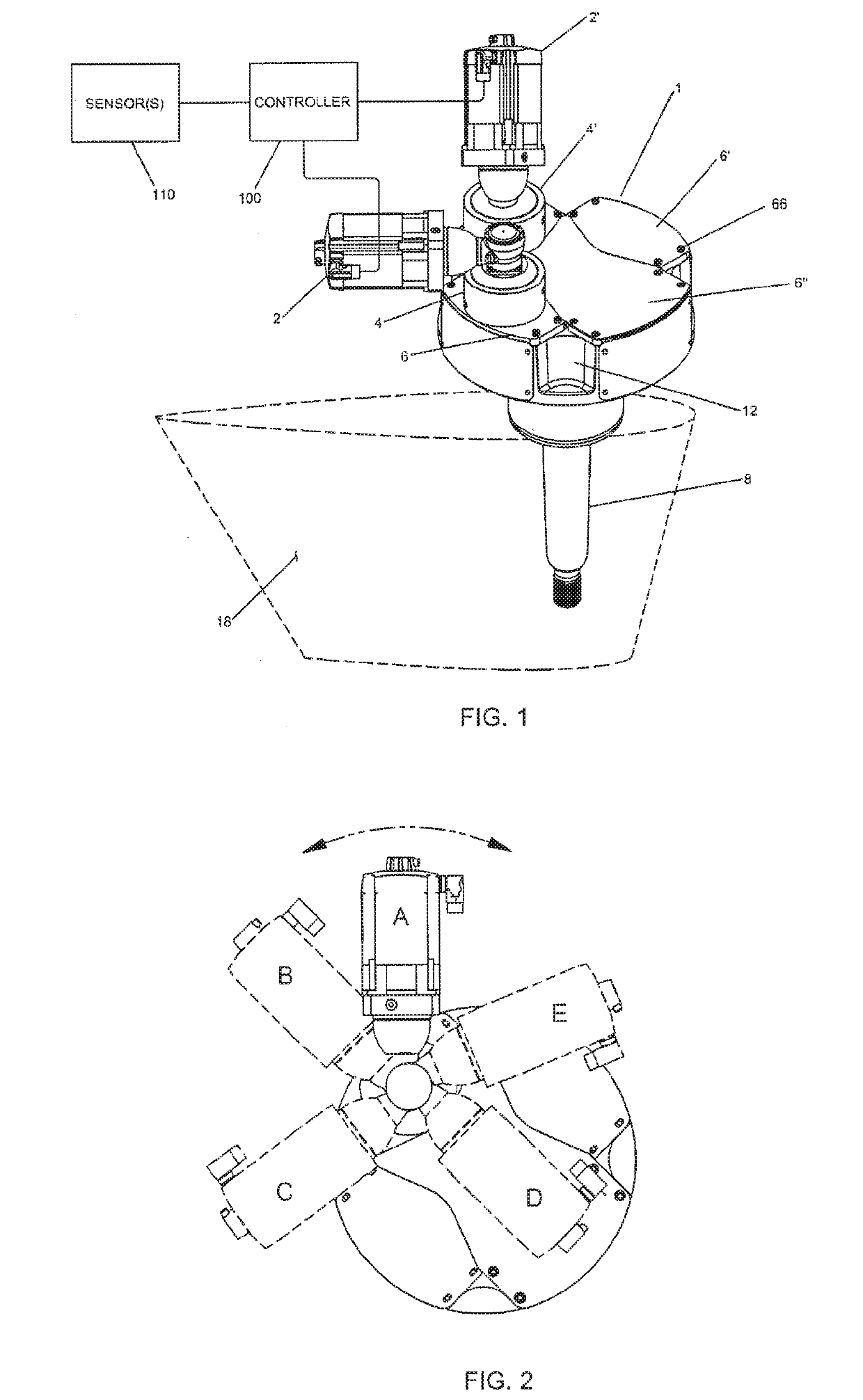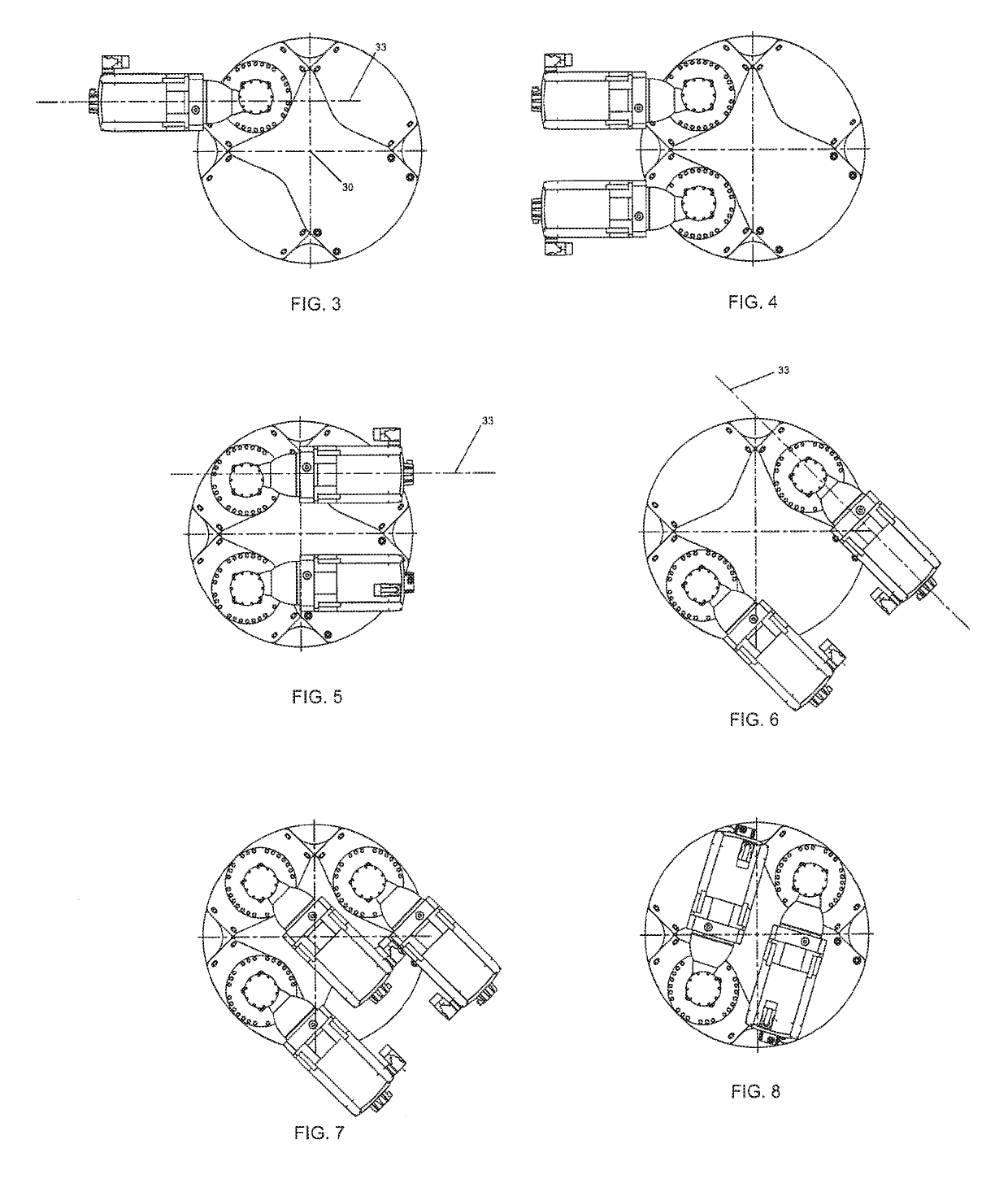Fin Stabilizer
a stabilizer and fin technology, applied in the direction of foil-based vessel movement reduction, waterborne vessel, movement controller, etc., can solve the problems of system overheating, early failure of hydraulic components, and difficult installation and maintenance, so as to improve torque control and reduce or zero backlash
- Summary
- Abstract
- Description
- Claims
- Application Information
AI Technical Summary
Benefits of technology
Problems solved by technology
Method used
Image
Examples
Embodiment Construction
[0038]Referring now to the drawings, wherein like reference numerals designate corresponding structure throughout the views. The following examples are presented to further illustrate and explain the present invention and should not be taken as limiting in any regard.
[0039]FIG. 1 shows an example drive unit assembly 1 for a fin stabilizer which employs the oscillating tooth based drive system 4, 4′ to drive the shaft 8 which rotates the fin 18 attached thereto. An example fin that attached to a shaft similar to that shown in FIG. 1 is also shown and described in U.S. Pat Pub No 2016 / 0121978, the content of which is incorporated by reference herein. It is understood that other drive elements made gears and other transmission devices may be employed in connection with this system. As shown, the drive unit assembly 1 is connected to a controller 100 which receives sensor data from sensor(s) 110 to determine what stabilizing commands are necessary based on the conditions and movement of...
PUM
 Login to View More
Login to View More Abstract
Description
Claims
Application Information
 Login to View More
Login to View More - R&D
- Intellectual Property
- Life Sciences
- Materials
- Tech Scout
- Unparalleled Data Quality
- Higher Quality Content
- 60% Fewer Hallucinations
Browse by: Latest US Patents, China's latest patents, Technical Efficacy Thesaurus, Application Domain, Technology Topic, Popular Technical Reports.
© 2025 PatSnap. All rights reserved.Legal|Privacy policy|Modern Slavery Act Transparency Statement|Sitemap|About US| Contact US: help@patsnap.com



